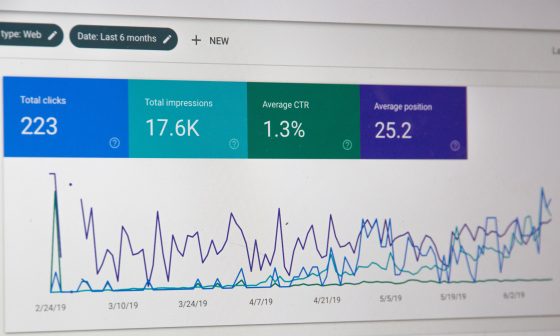Talk to any small business owner today, and chances are they’ve heard they “need to be doing video.” But what does that really mean — and more importantly, how do they do it well?
If you’re running a customer acquisition platform or digital agency working with local brands, helping your clients figure out video marketing for business can do more than move the needle. And not just in theory. We’re talking about real-world reach, stronger reputation, and more customers walking through the door (or going to the website, filling up their online shopping carts, etc.).
This doesn’t mean adding more fluff to your content calendar though. It’s about crafting clear, genuine videos that are tailored to what people actually want to watch.
Let’s break it down, from what makes a good strategy to video types that get attention, plus some clever video marketing tips agencies can put into action today.
Why Local Businesses Shouldn’t Sleep on Video?
You don’t need a national campaign to see results with video. In fact, local businesses can benefit even more — precisely because their audiences are closer and more connected.
Let’s face it: people are far more likely to choose a neighborhood café or repair shop if they’ve seen a quick video ad, a walkthrough, or a testimonial from someone nearby. It puts a face (or a voice) to the brand. And it helps people feel like they’re not taking a gamble.
Even short, informal videos can help build familiarity — and that familiarity often turns into trust, then foot traffic.
The same goes for online promotion. Leveraging social media does wonders. Influencers, for example, often have a strong local following and their endorsements can draw in new customers from the area. And just creating a product demo instead of a written tutorial can make your online presence more human and relatable.
Stats are one thing (and yes, they’re impressive — like 82% of consumers saying a video has convinced them to buy), but it’s the human element that really sticks. Especially in local business video marketing, where relationships matter more than reach.
Building a Video Strategy That Actually Makes Sense
Helping a small business “start doing video” can feel maddening. Here’s how to guide your clients through it:
1. Know who to talk to
Not every business should be on every platform. A dog groomer might get more traction on Instagram Reels, YouTube Shorts or TikTok than they would on Facebook. Start by defining who the audience is — and where they spend their time.
2. Pick a focus (and stick with it)
Instead of pushing five video types at once, help clients focus on one or two to start. Maybe they do weekly quick tips. Or monthly product spotlights. Consistency beats variety when you’re just getting the hang of small business video marketing.
3. Keep it real — but not rough
You don’t need Hollywood-level production. But you do need to hear what’s being said. Clean audio, decent lighting, and stable framing are three pillars that most small businesses should try to nail. Think “friendly and professional,” not “rushed selfie in the parking lot” (unless it’s for a playful post, of course).
Going further, video editing can be a real asset for trimming, color correcting, and adding simple graphics and captions. For example, Movavi software offers tools for both the editing process and recording screencasts (and they’re beginner-friendly, meaning no hours of tutorials necessary).
4. Choose the right places to publish
YouTube works well for evergreen content like tutorials and FAQs but the audience focus really shifted to short-form content with the rise of the corresponding video platforms. The key? Don’t just post one 10-minute long video — repurpose, resize, and reshare.
5. Track the stuff that matters
Views are nice. Engagement is better. Conversions? Even better. Set simple KPIs upfront — like clicks to a booking page, comments from locals, or in-store mentions of a video offer. Then use tools like Google Analytics or similar video analytics tools like VidIQ to gather data into a single dashboard.
What Kind of Videos Should Local Businesses Be Making?
You don’t need to reinvent the wheel. You just need videos that feel human, offer something useful, and show off the brand’s personality. Here are five easy formats to pitch:
- Quick tips & tutorials
Show how something works. A bike shop can demo how to change a flat. A salon might share “3 ways to tame frizz at home.” Educational videos not only mean more authority — they’re incredibly shareable.
- Mini ads with personality
A 15-second spot promoting a weekend sale? Great. But make it fun. Add a voiceover. Show the staff dancing. Toss in bloopers. These micro-ads help promote the brand without making it look more like traditional advertising.
- Backstage clips
Whether it’s prepping ingredients in a restaurant kitchen or opening a shipment at a clothing boutique, people love to see the process. It’s real. It’s relatable. And it helps potential customers connect.
- Customer shoutouts
Instead of formal testimonials, try “mic at the counter” style clips. Ask customers how they found the place or what they love about it. Natural reactions work better than rehearsed scripts.
- Weekly YouTube episodes
Some small businesses go all in. A fitness studio might run a weekly stretch session. A wine shop could post reviews and pairings. If you’re helping them go long-form, this is a great format to build community and SEO at the same time.
- Going live
The same YouTube/Instagram episode can be done live. If you don’t want to use the same platform, you can create a channel somewhere like Twitch. More interactions always make for a better show.
Mix and match these formats based on the client’s goals and audience, and rotate regularly to keep things fresh.
Examples of Real Brands Doing It Right
Let’s look at two local businesses that’ve made video work — no big ad agencies required.
Candy Funhouse (Ontario, Canada)
What started as a small online candy shop blew up on TikTok thanks to simple, fun clips of staff packing colorful orders. They didn’t overthink it — they just kept things playful, fast-paced, and snackable (pun intended).
Roger Wakefield, “The Expert Plumber”
Roger turned his plumbing know-how into a YouTube powerhouse by explaining basic fixes and answering common questions. His videos (many with over 5M views) brought in DIYers and, eventually, loyal customers who trusted his voice and transparency.
Final Thoughts
At the end of the day, you don’t need to overcomplicate anything about video marketing for business. What matters is creating content that helps, entertains, or connects — and making sure the right people see it.
For agencies, this is a huge opportunity to use video marketing tips in ways that actually help small brands progress. Local business video marketing can quickly transform from mere content creation to a thorough growth engine.
And the best part? Once your clients start seeing results, they won’t want to stop.


